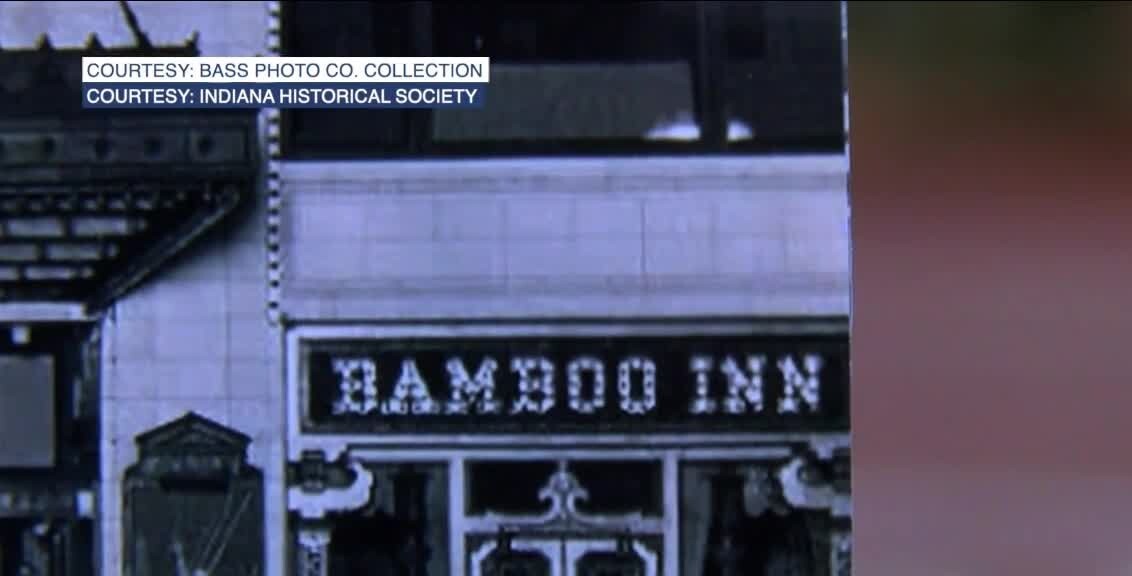INDIANAPOLIS — May is Asian American and Pacific Islander Heritage Month. At WRTV, we celebrate the diversity in our community every day, but today we’re taking viewers back in time to learn about a bit of Hoosier history that you might not have heard before.
Inside the Indiana Historical Society building, you’ll find Multicultural Collections Coordinator, Nicole Martinez-LeGrand.
Her knowledge from work gives her a unique perspective on the streets in Indianapolis and she tells us that every day people walk past 45 Monument Circle, but many don’t know that there’s so much more to that space.
“I think walking around, they just go this is where the Indianapolis Symphony Orchestra played.” Martinez-LeGrand said, “Little did they know that this is where the Bamboo Inn Orchestra played for a number of years here on Monument Circle.”
So, let’s go back in time, to 1918, to a time when cars looked more clunky and the Bamboo Inn opened in a very noticeable way.
Martinez-LeGrand said, the exterior had “a beautiful 'Bamboo Inn' sign and facade, as well as a giant sign that said 'Chop Suey,' right on the top.”
This Chinese American restaurant was known for its unique food. She said that included, “Egg lemonade, which was a digestive ... Queen Sea turtle soup, filet mignon, lobster or oyster.”

The Bamboo Inn also had much more to offer. “It had a resident orchestra, so they had evening shows, and then night shows Thursday through Sunday,’ said Martinez-LeGrand. “So, if you wanted to see and be seen, you were at the Bamboo Inn.”
Around 1932, the Bamboo Inn had a club on the second floor that was big enough to hold 250 people. As a highlight in the Hoosier social scene, the Bamboo Inn lived through a lot of history.
Martinez-Legrand said, “being on Monument Circle, especially in the 1920s at the height of racism and the Klan in Indiana, this really proves a testament to the strength in the visibility of the Asian community here in the first half of the 20th century.”
Some of its people felt the low points in the Asian American and Pacific Islander community. “There were a lot of different laws that you know like the Chinese Exclusion Act, the Page Act, a lot of different other things that affected the Asian community,” said Martinez-LeGrand.
At other times, the Bamboo Inn saw the high points. She said, “they would see, you know, celebrations here in the circle, the ending of World War I, the start of World War II, the end of World War II. So, you know, they had the front seat to everything.”
The Bamboo Inn even saw its own pandemic, in 1918, at the tail end of the Spanish Flu. One year later, the new owners made changes.
“They refurbished it and made private booths,” said Martinez-LeGrand.
The switch raises the question: “Is this the early age of, you know, social distancing here at the Bamboo Inn?,” said Martinez-LeGrand.
Through a pandemic, wars and much more, the Bamboo Inn represents a piece of forgotten Hoosier history, that people like Nicole help keep alive.
“Especially with the AAPI community, you know, a lot of that story is largely untold,” said Martinez- LeGrand. “So, it's my job, as well as ... lots of other great researchers here in the city of Indianapolis, who are working to uncover those narratives and promote their narratives, so people can look at the city in a different light, and, and understand how long and deep these communities have existed.”
The Bamboo Inn was sold in 1961 when it moved its way up Meridian Street, but it operated under a different name called Jong Mea and that restaurant lasted for another couple decades.
The Indiana Historical Society is celebrating AAPI Heritage Month also, on its Facebook page.
It will have additional segments called “Afternoon with the Archivist,” where they will talk about the AAPI community’s influences on agriculture in Indiana.



